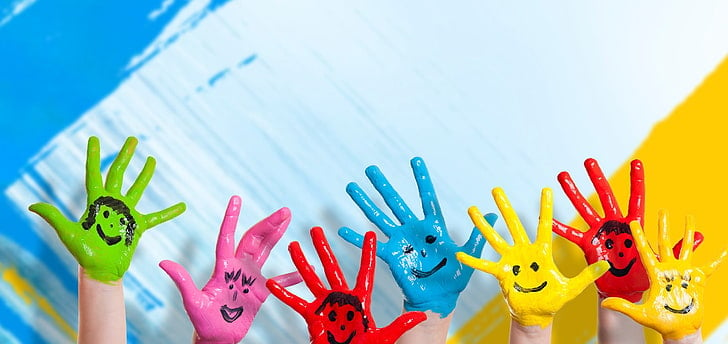Learning new things with fun for special children
Explore a treasure trove of fun activities, yoga, and games specially designed for extraordinary kids. Our blog provides engaging study materials that encourage learning and new experiences, ensuring every child reaches their full potential while enjoying the journey. Join us in making learning fun and accessible!
5/8/20244 min read
Learning Through Fun for Special Children
Learning is a lifelong activity, and for children with special needs, the process should be educational in nature but also inherently fun and engaging. A child may be more motivated to continue learning new concepts if learning is enjoyable. Through the right activities, such an environment can be developed wherein special kids feel encouraged to explore new skills yet have the best time. It will focus on creative ways to make learning interesting for special children.
1. Learning by Playing
Learning through play is the best way because it makes the entire process fun and natural. For special kids, play can be a great opportunity to develop certain cognitive, emotional, and social skills.
Educational Games: Matching cards, jigsaw puzzles, and board games are how kids can learn to problem-solve and concentrate in a fun manner. For example, a match of a color or animal heightens their memory and recognition by sight.
Interactive Storytelling: Make new concepts, such as numbers or letters, told with puppets or toys. The more the child learns to associate the knowledge with a character or story, the more it will be remembered for longer periods.
Building Blocks: Blocks, LEGOs, or magnetic tiles make excellent tools for teaching spatial awareness, creativity, and motor skills. You can introduce basic math concepts, such as counting or patterns, by having them build specific structures.
2. Creative Arts and Learning
Art really does afford many opportunities to the child to express his imagination about the things he has learned. In art, special children are able to unfold and nourish their imagination, thus refining fine motor skills and cognitive ability.
Coloring by Number This activity helps the child learn about colors and numbers, but enhances fine motor skills and concentration skills. Find images progressively more complicated as the child advances.
DIY Crafts Traditionally available for paper animals or a collage that relates to seasons or feelings, this is a good way in which they can learn regarding time of year, species, emotions, and so much more. Attention to detail improves, hand-eye coordination whilst cutting, pasting, and painting.
Music and Rhythm: Incorporate music and rhythm into activities with playing instruments, or clapping and singing along with songs. Utilize simple lyrics in songs to teach new words, concepts, or even simple routine such as brushing teeth or shoelaces.
3. Hands-on Learning and Exploration
Hands-on learning and exploration is a common beneficiary to children with special needs. As their world is full of abstract ideas, concrete representations of the concepts best fit their perception.
Cooking Together: One of the best ways to teach math (measuring ingredients), science (how things change when heated or mixed), and life skills (following instructions) is cooking. Making cookies or a simple sandwich or even blending a smoothie can be both educational and fun.
Science Experiments: Creating slime or a small volcano is one of those easy activities that may be carried out to introduce science to kids in a very practical way. Cause and effect would also be learned accompanied by fulfillment of their curiosities.
Gardening: Sowing seeds, tending to the plants, and the observation on how the plants grow all expose children to biology and teach them responsibility and patience. Children would learn about various types of plants, colors, and textures through first-hand engagement with the environment.
4. Outdoor Exploration and Learning
There are exciting classrooms outside where special children learn about the world around them, which is effective and stimulating for all the senses.
Nature Walks : Take a walk with your child around the park or maybe in the backyard, and encourage the child to observe plants, animals, and the weather. You could also ask a question like, "What do you hear?" or "Find something soft and green." These activities help the child be mindful and observe closely.
Treasure Hunts: Hide objects or clues about a lesson in the house or yard, hide shapes, letters, and numbers around the yard and home for the child to find those concepts.
6. Add Movement and Kinesthetic Learning
Most of the gifted children respond very well to active games that keep them moving. Combining the play with learning makes the kids remember a lot of what they are learning in a lively way.
Learning By Dancing: Encourage your child to make lessons into dances, such as hopping to count or spinning around for directions left or right. In addition to making learning fun, it further enhances the motor skills and body awareness.
Yoga for Children: Simple yoga poses can be combined with storytelling, where every pose represents an animal or something in the story. This encourages children to focus, be mindful, and keep fit.
Obstacle Courses: Design an obstacle course so that a child would have to solve a problem, count an object, find shapes, or anything else before they could proceed to the next thing. This integrates physical activity with mental exercise.
That's where learning is a happy thing – especially for children with special needs. Fun and education go hand in hand, thus creating an ambiance where children can thrive and grow while enjoying the process of learning. And this can be through art, play, technology, or just being outside. It's all endless ways to engage every child with learning.
Thus, we throw open the doors of fun, supportive environments for which these children would effectively help in actualizing their full potential suited to their unique strengths and needs. Let's celebrate joy in learning together and find new ways of making learning an exciting adventure for every child!
Watch out for more ideas and activities to turn learning into an exciting journey for special children!




